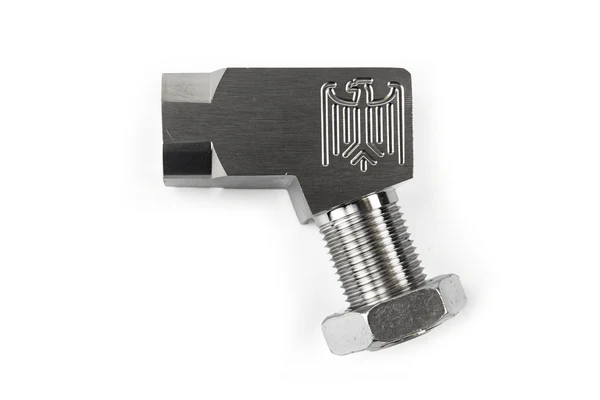1. What Is an O2 Sensor?
Before we get into the spacer, let’s first understand the O2 sensor itself. The O2 Sensor Spacer, also known as an oxygen sensor, is a critical component in your car’s exhaust system. Its primary job is to measure the amount of oxygen in your car’s exhaust gases and report back to the engine control unit (ECU).
When your car’s engine burns fuel, the O2 sensor Spacer helps ensure that the right fuel-to-air ratio is maintained. If there’s too much or too little oxygen in the exhaust, the sensor alerts the ECU, which then adjusts the fuel mixture. This helps keep your engine running efficiently and minimizes harmful emissions.
2. How Does an O2 Sensor Work?
An O2 sensor works by sending real-time data to your vehicle’s computer system. It continuously monitors the oxygen levels in the exhaust and helps the car determine if it’s running “rich” (too much fuel) or “lean” (too little fuel).
Think of it like a thermostat for your car’s exhaust. Just as a thermostat measures the temperature and signals the furnace to adjust, an O2 sensor reads oxygen levels and signals the ECU to tweak the fuel mix. Without a properly functioning O2 sensor, your car might suffer from poor fuel efficiency, higher emissions, or even engine damage over time.
3. What Is an O2 Sensor Spacer?
An O2 sensor spacer is a small, cylindrical piece of hardware that fits between the O2 sensor and the exhaust pipe. It’s essentially an adapter that positions the sensor slightly out of the direct flow of exhaust gases.
Why would someone want to do this? The main reason is to “trick” the O2 sensor into thinking that emissions levels are lower than they actually are. This is sometimes used by individuals who have made modifications to their exhaust system (like removing a catalytic converter) and want to avoid triggering a check engine light.
4. How Does an O2 Sensor Spacer Work?
The O2 sensor spacer creates a small gap between the sensor and the exhaust gases, allowing the sensor to detect lower concentrations of oxygen. This reduced exposure to the exhaust can cause the vehicle’s computer to believe that the car’s emissions are within acceptable limits.
However, it’s important to note that while the spacer can help prevent a check engine light from coming on, it doesn’t actually reduce your car’s emissions. Instead, it modifies the sensor’s readings.
5. Benefits of Using an O2 Sensor Spacer
For some car owners, particularly those who have modified their vehicles, O2 sensor spacers can provide a few advantages:
- Avoid Check Engine Lights: If your car’s O2 sensor is too sensitive after modifications, a spacer might help reduce the likelihood of triggering a check engine light.
- Temporary Fix for Emissions Testing: In some cases, a spacer can help a vehicle pass emissions tests by altering sensor readings.
- Easier to Use After Exhaust Modifications: When upgrading or removing parts of the exhaust system, spacers can help ensure that the vehicle runs smoothly without causing sensor issues.
However, the benefits are often short-term, and relying on a spacer alone is not a recommended long-term solution.
6. Is Using an O2 Sensor Spacer Legal?
This is a common question, and the answer varies depending on where you live. In some regions, using an O2 sensor spacer is illegal, especially if it’s being used to bypass emissions controls.
For example, in states with strict emissions laws, altering your exhaust system or using a spacer to trick the O2 sensor could lead to fines or failing an emissions test. It’s always a good idea to check local regulations before installing one.
7. Common Misconceptions About O2 Sensor Spacers
There are a few misconceptions floating around about O2 sensor spacers, so let’s clear those up:
- Myth 1: “An O2 sensor spacer improves performance.” – False. It might prevent check engine lights, but it won’t improve engine performance or fuel efficiency.
- Myth 2: “It will make my car pass emissions testing.” – While it might temporarily help, this isn’t a guaranteed fix and could lead to future problems.
- Myth 3: “It reduces emissions.” – No, the spacer just alters sensor readings; it doesn’t actually lower emissions.
8. How to Install an O2 Sensor Spacer
Installing an O2 sensor spacer is relatively simple, but it does require basic mechanical knowledge. Here’s a step-by-step guide:
- Locate the O2 Sensor: Find the sensor in your exhaust system. Most vehicles have one or two sensors located near the catalytic converter.
- Unscrew the Sensor: Using a wrench, carefully remove the sensor from the exhaust pipe.
- Attach the Spacer: Screw the spacer into the exhaust pipe where the sensor was located.
- Reinstall the Sensor: Finally, screw the O2 sensor into the spacer. Make sure everything is tightened securely.
9. O2 Sensor Spacer and Emissions Testing
If your vehicle is required to pass an emissions test, you might be tempted to use an O2 sensor spacer to avoid any issues. However, this is not a foolproof solution. Many modern emissions tests are more advanced and can detect when a sensor has been tampered with.
In some areas, using a spacer could result in your vehicle failing the test or even lead to penalties if it’s deemed illegal. It’s always better to fix the underlying issue with your vehicle’s emissions system rather than relying on a spacer.
10. Should You Use an O2 Sensor Spacer?
So, should you use an O2 sensor spacer? The answer depends on your specific situation. If you’ve modified your car’s exhaust system and keep getting check engine lights, a spacer could be a temporary solution. However, it’s important to understand that this is not a long-term fix.
11. When to Replace Your O2 Sensor
Like all car parts, O2 sensors don’t last forever. If your sensor is giving faulty readings, it might be time to replace it. Signs of a failing O2 sensor include:
- Poor fuel economy
- Rough idling or engine misfires
- Increased exhaust emissions
Replacing a bad sensor will help your car run more efficiently and prevent further engine issues.
12. The Role of O2 Sensors in Fuel Efficiency
Your vehicle’s O2 sensor plays a crucial role in determining how much fuel your engine uses. By keeping the air-fuel mixture balanced, the sensor helps ensure that your car runs efficiently. If your O2 sensor is malfunctioning, it could lead to higher fuel consumption and increased costs over time.
13. O2 Sensor Spacer Alternatives
While an O2 sensor spacer might seem like a quick fix, there are alternatives. One option is to address the root cause of your emissions problem by repairing or replacing faulty parts like the catalytic converter or exhaust system. This will provide a more permanent solution and improve your car’s performance in the long run.
14. Conclusion: Understanding the Role of O2 Sensor Spacers
In conclusion, O2 sensor spacers can serve a purpose for some drivers, particularly those who have modified their exhaust systems and need a temporary workaround for sensor issues. However, it’s important to be aware of the limitations and legal implications of using a spacer.
Instead of relying on a spacer as a long-term solution, addressing the root cause of the issue is the better approach. Your car (and the environment) will thank you.


